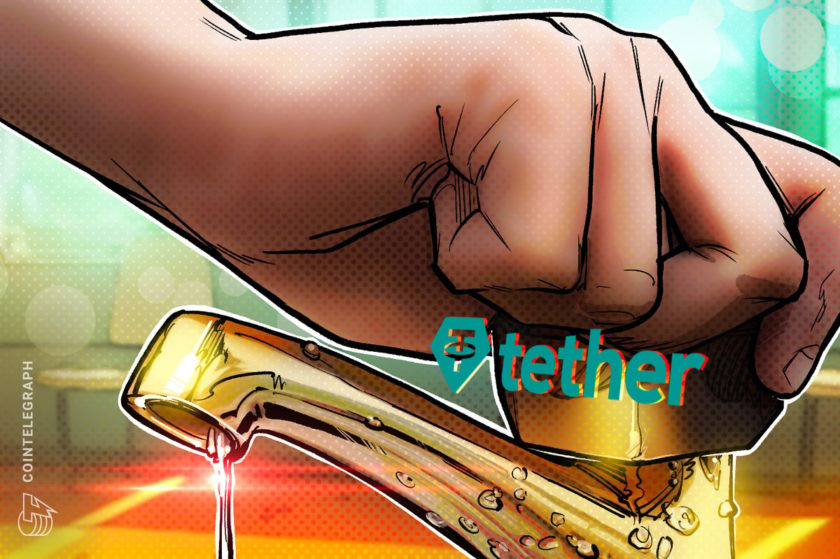CCN is expanding. Are you our next full-time journalist from the West Coast USA? Send us your CV and examples here.
Several months ago, crypto exchange Gemini made waves when it announced that, with permission from the New York Department of Financial Services (NYDFS), it had created a USD-pegged cryptocurrency “stablecoin” that would provider traders and institutions with a “regulated” alternative to tether (USDT), which was frequently the subject of controversy despite having a multi-billion dollar market cap and the second-highest average daily trading volume of any cryptocurrency.
That same day, fellow New York blockchain startup Paxos Trust Company announced that it had also received NYDFS approval to launch a stablecoin, called the Paxos Standard (PAX). Unsurprisingly, PAX received far less initial attention than Gemini Dollar (GUSD), given that the latter had the benefit of a Winklevoss media blitz while the former — though a significant player in the professional crypto trading market — was not well-known among retail investors.
The Tether Quandary
Paxos General Manager David Wells told CCN that the firm began seriously discussing launching a stablecoin in early 2018 after — like Gemini — identifying market demand for a fiat-backed cryptocurrency that operated within a robust regulatory framework, e.g., an alternative to tether.
Tether has long dominated the fiat proxy landscape, accounting for 98 percent or more of daily stablecoin trading volume. The crypto token, whose market cap currently stands at $1.8 billion and once approached $3 billion and, is viewed by some as a systemic risk to the crypto market, given that it plays such a prominent role in bitcoin price discovery, and virtually all other cryptocurrencies derive their values from bitcoin.
The USDT token is perhaps the most controversial cryptocurrency asset, surpassing even perennial flashpoints such as ripple (XRP), EOS, IOTA, tron (TRX), and whatever initial coin offering (ICO) token John McAfee is shilling this week. Investors, nocoiners, and academics alike have sparred over whether Tether and crypto exchange Bitfinex — the two firms share a management team — are operating a fractional reserve and using unbacked tokens to inflate the bitcoin price and prevent it from falling below key support levels.
Both the Commodity Futures Trading Commission (CFTC) and Justice Department have opened investigations into whether Tether and Bitfinex have engaged in illegal activities, though, as of the time of writing, no enforcement actions have been made public.
Stablecoin Alternatives Emerge
NYDFS — the architect of the BitLicense — oversees what is arguably the most rigorous regulatory framework in the US for cryptocurrency companies, and Wells said there was “a lot of back and forth” and education sessions before the agency gave them the green light to begin digitizing dollars. “They saw the need for a regulated stablecoin in the market,” he said.
But what makes these tokens more “regulated?” Well, for one thing, issuers such as Paxos and Gemini must engage in more robust recordkeeping and monitoring. For another, they must adopt “risk-based controls” to prevent the tokens from being used as tools for money laundering or other illegal practices, which generally involves giving the issuing account the ability to freeze user balances and revoke tokens associated with criminal activities.
Of course, Gemini and Paxos aren’t the only companies seeking to unseat USDT. TrustToken’s TrueUSD (TUSD), which launched earlier this year, has grown its market cap to $182 million, making it the second-largest stablecoin as of the time of writing. USD Coin (USDC), whose announcement came shortly after GUSD and PAX, ranks third with a $169 million valuation.
There are also the algorithmic or seigniorage stablecoins such as Dai and Basis, which are not exclusively backed by fiat reserves but may be fully or partially collateralized by other assets. The smart contracts governing these tokens are programmed to automatically control the supply based on market demand, increasing supply when demand threatens to push its price above its peg and removing tokens from circulation when the converse occurs.
PAX, USDC Jockey for Stablecoin Throne
While TrueUSD maintains an early-mover advantage, it increasingly appears that the quest to supplant tether is becoming a two-horse race between PAX and USDC, who are rapidly gaining on TUSD and have thus far left GUSD in the dust.
USD Coin, unlike Paxos Standard, is backed by the biggest household name in crypto. Coinbase, along with fellow bitcoin unicorn Circle, is a co-issuer of USDC, and both are founding members of the CENTRE consortium, which governs the development of USDC and future stablecoin offerings. Consequently, USDC is listed directly on the Coinbase platform, enabling the firm’s tens of millions of users to easily convert between the token and fiat without having to open any new accounts.

But while tether continues to dominate stablecoin trading, PAX is the early leader among its upstart competitors — USDC included — regularly outpacing its peers in both average daily trading volume and velocity of money, that is, the ratio of its daily turnover to market cap.
“One differentiator for us is the fact that we’ve had a global presence for the five years that we’ve been operating the company,” Wells explained, noting that the firm’s crypto exchange — itBit — has offices in both New York and Singapore. He said that relationships with international market makers and exchanges, along with the firm’s OTC desk, have helped PAX jumpstart the network effect and achieve rapid adoption on global venues.
Of course, stablecoins bring more to the table than just trading, and issuers have highlighted a number of potential use cases for these tokens, ranging from improving the efficiency of fiat-denominated cross-border payments to making decentralized application (dApp) fees more consistent. However, Wells said that, at least right now, PAX — like other stablecoins — is primarily used by crypto traders, both on conventional cryptocurrency exchanges and the firm’s off-book over-the-counter (OTC) trading desk.
“It’s just a good alternative to fiat,” Wells said, noting that stablecoins allow traders to quickly move funds across exchanges without subjecting themselves to price volatility, even temporarily. “We’ve heard from a lot of traders who trade across different venues that they just prefer PAX to cash.”
The gap has narrowed over the past two weeks, with several developments providing USDC with a huge boost. First, Binance — the world’s largest crypto exchange — listed a USDC/BTC trading pair, providing the token with a significant liquidity boost. Second, crypto exchange Poloniex — whose parent company is Circle — became the first major trading platform to create a bitcoin cash pre-fork futures market. Significantly, Poloniex listed the pre-fork tokens against USDC, but not tether, forcing traders to use Circle’s stablecoin if they wanted to use USD — or at least a fiat proxy — to gamble on the BCH fork’s outcome.
Even so, PAX maintains a considerable edge. Its $305 million in seven-day trading volume is more than 140 percent larger than USDC’s $125 million, as well as 10 percent higher than the more-established TUSD’s $277 million.
However, those statistics don’t just show that PAX has achieved a leg up on its peers. They also demonstrate how much more work lies ahead before PAX or any other upstart stablecoin becomes a credible threat to tether, whose $25 billion in weekly volume remains more than 30 times as large as the weekly volume of PAX, USDC, GUSD, and TUSD — combined.
Featured Image from Shutterstock
Get Exclusive Crypto Analysis by Professional Traders and Investors on Hacked.com. Sign up now and get the first month for free. Click here.





